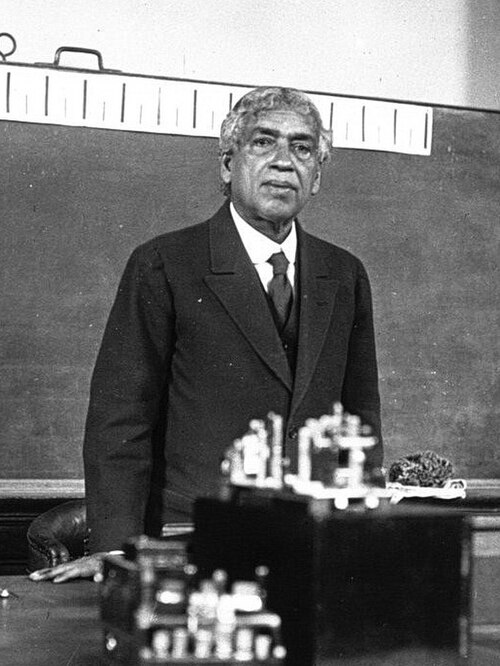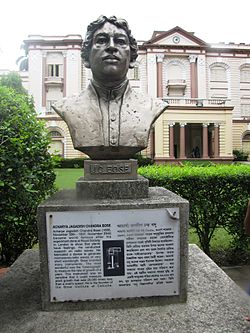Born 167 years ago this November, his impact is still being felt today.
Guglielmo Marconi is widely regarded as the father of the radio, with his contributions in the field leading to the development of the television and more. This work won him a shared Nobel Prize in Physics with Ferdinand Braun for their contributions to wireless communication.
However, like the title of this story suggests, that’s not the complete story. There was one more inventor who provided a key piece to Marconi’s work: Jagadish Chandra Bose.
Born November 30, 1858, in Bengal, India, Bose was a polymath interested in physics, biology, and writing science fiction. While he didn’t have a huge science fiction career, he did make major contributions not only to radio microwave optics but to botany as well. We’ll stick with the radio part for the purposes of this story.

After getting his diploma at St. Xavier’s College in Calcutta and conducting research at the University of Cambridge in England with Nobel Laureate Lord Rayleigh, Bose took a job as an officiating professor of physics at Presidency College in India. It’s here that his interest in radio began to take root (botany pun!), when British physicist Oliver Lodge published his demonstrations on how to transmit and detect radio waves in 1894. Curious about the light-like properties of the radio waves, he began his research that same year in a 20-square-foot room, where he was able to shrink the waves to about 5mm.
A year later, he published his first papers, “On polarisation of electric rays by double-refracting crystals” (to the Asiatic Society of Bengal) and “On a new electro-polariscope” (to the Royal Society of London). The second paper is believed to be the first ever published by an Indian in western scientific periodicals. More importantly, this paper also outlined his plans to make the “perfect” coherer, the first type of radio detector, used in early wireless telegraphy to receive radio frequency signals.

In 1899, this became the iron-mercury-iron coherer, which used iron filings between electrodes in a tube of mercury. He developed this for use with a telephone detector. In 1901, Marconi used this invention to aid in his first transatlantic wireless communication, where he used Morse code to send the letter S to a receiver in Newfoundland.
That’s not the only major milestone shaped by Bose’s work. In 1905, he invented the Galena Detector, which, in conjunction with a “cat’s whisker” wire, allowed electrical current to flow in only one direction, converting the high-frequency radio signal into a pulsed DC signal that the earphone could interpret as sound. It was one of the first semiconductor diodes, crucial for the development of early radio receivers by converting radio waves into audible sounds.
What makes Bose’s work even more interesting is that he didn’t care about developing wireless communications. He was only curious about learning more about radio waves and how they worked. He cared so little about the money his inventions could bring him that he refused to patent any of his discoveries. In fact, he would tour universities and colleges and openly discuss how his inventions, like the Galena Detector, worked. After some serious convincing from friends and family, though, he gave in and patented his Galena Detector.
For Bose, his interest in radio waves was purely for the study of the phenomenon, not the advancement of wireless communication. Ironically, it is this indifference to his creations that led to the obscuring of his legacy. Marconi and other inventors improved upon his designs and filed patents for them, but they failed (more than likely just left out) to include his name as the creator of the coherer on which their work was based.
However, Bose wouldn’t be condemned to obscurity forever. Scientific publications later clarified that Bose indeed provided the cornerstone of most wireless communication breakthroughs around that time.
Other contributions that Bose made in the field of radio include his help in pioneering chiral media, which preceded the study of artificial dielectrics and metamaterials. Artificial dielectrics are human-made materials that can be engineered to achieve specific properties, such as a refractive index less than one or the ability to precisely focus or shape radio waves, making them useful for designing advanced antennas, lenses, and waveguide filters.
Some even credit Bose for predicting the existence of P-type and N-type semiconductors, both of which are essential for creating electronic devices like diodes and transistors.

While many may not recognize his name today, some, like Sir Nevill Mott, who became a Nobel Laureate in 1977 for his own contributions to solid-state electronics, held his work in high regard, saying “J.C. Bose was at least 60 years ahead of his time.”
With everything he accomplished to advance wireless communication, we can’t help but agree with that statement.

